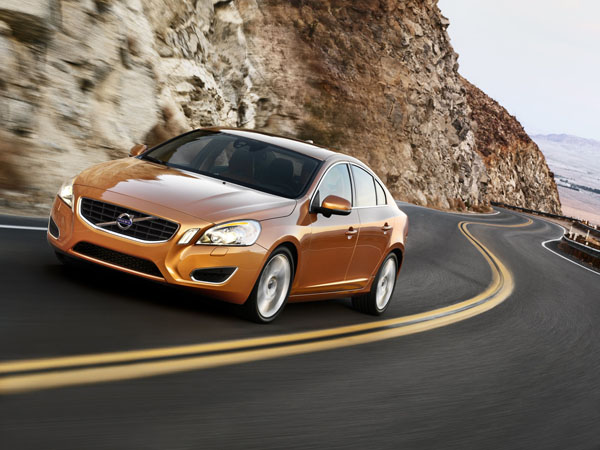
Volvo S60 is typically owned by someone who wants to get away from the prestige German marques. And appreciates the simplicity of Scandinavian styling.
We first saw the Volvo S60 sedan downunder in January 2001. It had a long run, albeit with several upgrades over the years, before being replaced by a virtually all-new car in December 2010.
The 2010 S60 has stronger styling and an even bigger emphasis on the latest in safety features, as well as technology items so we are starting this Checkout with that model.
There have been many full-on sports models in the Volvo S60 range. June 2013 saw the launch of the big one – the S60 Polestar from the company’s tuning division, Interestingly, Australia was the first country to receive it.
Polestar is powered by a turbocharged 3.0-litre straight-six that produces with 257 kW and over 500 Newton metres of torque all the way from 2800 to 4500 revs. The automatic transmission is modified version of the standard Volvo six-speed unit.
Suspension, steering and brakes were tuned and the body stiffened. It remained perfectly driveable in normal day-to-day running. There’s the possibility S60 Polestar could become a future classic – no promises, though…
Volvo S60 engines are an interesting mix of four- five- and six-cylinder units, all ‘straight’ engines, that is with the cylinders in straight line rather than in a ‘V’. Turbocharger are offered in various stages of tune, offering economy, power or something in between.
The great majority of S60 Volvos sold in Australia have automatic transmissions. In the sporting and some upmarket variants the auto has sequential overrides. Manuals are a rarity and may be hard to resell.
Insurance is normally in the mid-range for cars in this class. Shop around but check you’re doing apples for apples comparison.
We have heard very few complaints about availability or prices of spare parts. Volvo has been well established in Australia for many decades. The dealer network is large and generally widespread, though there’s a natural tendency for it to concentrate in major metropolitan areas.
These upmarket Swedish machines are complex in their makeup so are best left to the experts when it comes to repairs. By all means do minor servicing yourself if you feel confident and, as always, have a workshop manual on hand before opening that bonnet.
The Volvo S60 sedan has a station wagon variant, the Volvo V70. Later, the Volvo XC60 SUV joined the range. These aren’t covered here, but we will detail them in separate used-car reviews.
As is the way with upmarket cars look for one with a full service history. This may add to the price, but it’s money well spent.
WHAT TO LOOK FOR
An engine that hasn’t had its oil changed at the correct intervals may have sludge buildup in the sump. This issue is amplified if the owner uses cheap oil instead of that recommended by the factory.
Check the engine starts easily and immediately settles into a steady idle.
Wear at the top engine mounts may lead to a slight harshness. Get an expert to check it out.
In a turbocharged engine feel for excessive lag and listen for any whining from the turbo itself.
Feel for less than smooth gear changes from the automatic transmission as they can be a sign that work is required.
Sway bar links on some older S60s may have a clunking sound. They are easy to change and the repair isn’t too expensive.
High-performance models may have been used on track days. Volvo has a long history in rallies and track racing so look for harsh tyre wear, lots of brake dust inside the wheels, and perhaps a fire extinguisher – all of which can be easily removed…
HOW MUCH?
Expect to pay from $7000 to $11,000 for a 2011 Volvo S60 T5; $11,000 to $16,000 for a 2012 T6 R-Design; $13,000 to $9,000 for a 2014 T4 Kinetic: $15,000 to $22,000 for a 2012 Polestar; $17,000 to $24,000 for a 2013 T5 R-Design; $20,000 to $28,000 for a 2014 Polestar F or a 2016 T5 R-Design; $25,000 to $34,000 for a 2018 T4 Kinetic; $34,000 to $45,000 for a 2017 T5 R-Design; and $40,000 to $53,000 for a 2020 T5 Inscription.
CAR BUYING TIP
Some enthusiast car owners will have formed a club. Their members have a lot of information on cars and may even know the history of the one you’re considering.
RECALLS: To browse recalls on all vehicles go to the ACCC at: www.productsafety.gov.au/products/transport/cars/